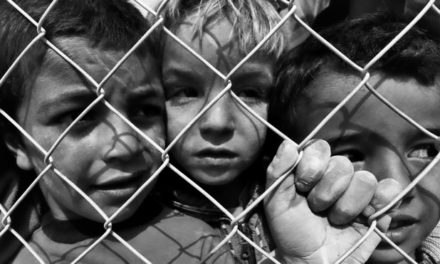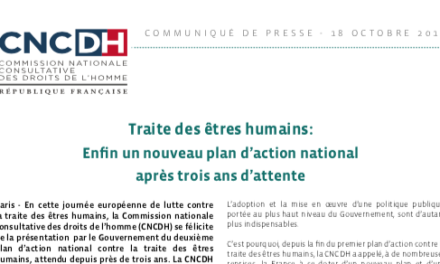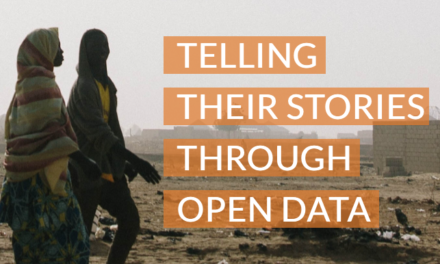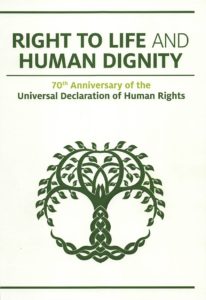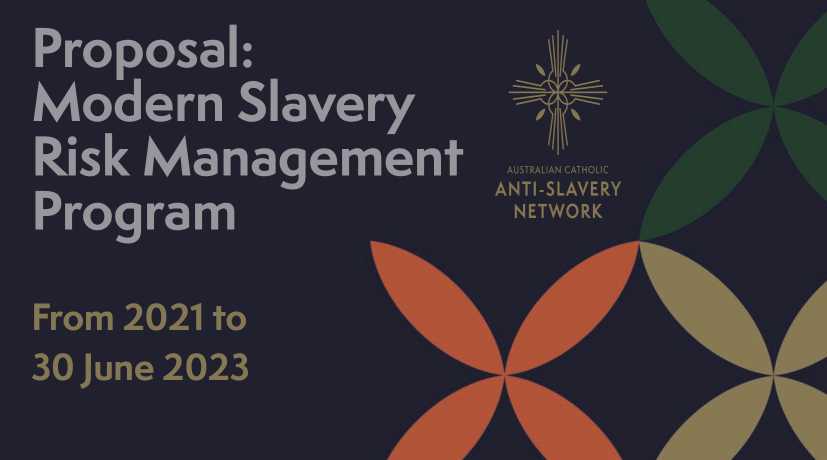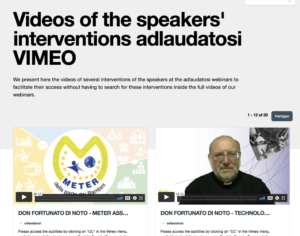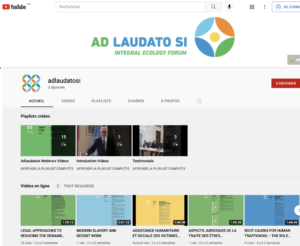INTRODUCTION & SUMMARY OF THREE UNODC REPORTS ON HT:
- “Global Report On Trafficking In Persons 2018” (Published in December 2018)
- Booklet “Trafficking in persons in the context of armed conflict” (Published in December 2018)
- “Handbook on Children Recruited and Exploited by Terrorist and Violent Extremist Groups: The Role of the Justice System” (Published in 2017)
This year’s Global Report indicates that the overall number of reported trafficking victims has increased. The UNODC (United Nations Office on Drugs and Crime Vienna) Global Report on Trafficking in Persons 2018 puts the spotlight on human trafficking in armed conflict because Trafficking in armed conflict has taken on horrific dimensions—child soldiers, forced labour, sexual slavery.
Human trafficking is always a crime, committed with the intention to exploit; in conflict situations, characterized by violence, brutality and coercion, traffickers can operate with even greater impunity. The vast majority of detected victims of trafficking for sexual exploitation and 35 per cent of those trafficked for forced labour are female. Conflict further exacerbates vulnerabilities, with armed groups exploiting civilians and traffickers targeting forcibly displaced people.
The need to take urgent action against these violations has been recognized by the 2018 Nobel Peace Prize, awarded to Nadia Murad, the United Nations Office on Drugs and Crime Goodwill Ambassador for the Dignity of Survivors of Human Trafficking.
Ms. Murad, a young Yazidi woman who was enslaved and raped by ISIL terrorists after they destroyed her village and killed members of her family, is the first-ever human trafficking victims to serve as a United Nations Goodwill Ambassador. She was awarded the Nobel Peace Prize along with Dr. Denis Mukwege for their efforts to end the use of sexual violence as a weapon of war and armed conflict—a well-deserved honour for her tireless efforts to tell her story and seek justice.
The “Global Report On Trafficking In Persons 2018”main points are the following:
- Globally countries are detecting and reporting more victims, and are convicting more traffickers.
- This can be the result of increased capacity to identify victims and/or an increased number of trafficked victims. Over the last ten years, the capacity of national authorities to track and assess patterns and flows of trafficking in persons has improved in many parts of the world. This is also due to a specific focus of the international community in developing standards for data collection.
- In 2009, only 26 countries had an institution which systematically collected and disseminated data on trafficking cases, while by 2018, the number had risen to 65.
- From a regional perspective, the increases in the numbers of detected victims have been more pronounced in the Americas and in Asia.
- Still large areas of impunity:
- The number of convictions has only recently started to grow. Pronounced increasing trends in the numbers of convictions were recorded in Asia, the Americas, and Africa and the Middle East.
- However, many countries in Africa and Asia continue to have very low numbers of convictions for trafficking, and at the same time detect fewer victims.
- This suggests that trafficking networks operate with a high degree of impunity in these countries. This impunity could serve as an incentive to carry out more trafficking.
- More trafficking of domestic victims, while the richest countries are destinations for long-distance flows:
- Western and Southern Europe and countries in the Middle East, for example, record sizable shares of victims trafficked from other regions; whereas such detections are relatively rare in most other parts of the world.
- Traffickers are mainly targeting women and girls.
- The vast majority of the detected victims of trafficking for sexual exploitation are females, and 35 per cent of the victims trafficked for forced labour are also females, both women and girls. At the same time, more than half of the victims of trafficking for forced labour are men.
- There are considerable regional differences in the sex and age profiles of detected trafficking victims, however. In West Africa, most of the detected victims are children, both boys and girls, while in South Asia, victims are equally reported to be men, women and children.
- Trafficking for sexual exploitation continues to be the most detected form.
- Most of the victims detected globally are trafficked for sexual exploitation, although this pattern is not consistent across all regions.
- Trafficking for forced labour is the most commonly detected form in sub-Saharan Africa. In the Middle East, forced labour is also the main form of trafficking detected, mainly involving adults. In Central Asia and South Asia, trafficking for forced labour and sexual exploitation are near-equally detected, although with different victim profiles.
- Armed conflicts can drive vulnerabilities to trafficking in persons:
- Armed conflicts can increase the vulnerability to trafficking in different ways.
- Areas with weak rule of law and lack of resources to respond to crime provide traffickers with a fertile terrain to carry out their operations.
- This is exacerbated by more people in a desperate situation, lacking access to basic needs.
- Some armed groups involved in conflict may exploit civilians. Armed groups and other criminals may take the opportunity to traffic victims—including children—for sexual exploitation, sexual slavery, forced marriage, armed combat and various forms of forced labour.
- Trafficking in persons for sexual exploitation occurs within all conflict areasconsidered:
- including sub-Saharan Africa, North Africa and the Middle East, South-East Asia and others. In some refugee camps in the Middle East, for example.
- It has been documented that girls and young women have been “married off” without their consent and subjected to sexual exploitation in neighbouring countries.
- Abduction of women and girls for sexual slavery has been reported in many conflicts in Central and West Africa, as well as in the conflicts in the Middle East. It has also been reported that women and girls are trafficked for forced marriage in the same areas.
- Recruitment of children for use as armed combatants is widely documented in many of the conflict areas considered: from the Democratic Republic of the Congo to the Central African Republic, as well as in conflicts in the Middle East and other parts of Asia.
- POLICY IMPLICATIONS:
- Despite the progress, impunity still prevails in large parts of the globe, as shown, for instance, by the low levels of victim detections and trafficker convictions recorded in sub-Saharan Africa and parts of Asia. Most countries in these regions are now parties to the UN Trafficking in Persons Protocol and have appropriate legislation in place. The work in these regions of origin, as well as in their main countries of destination now needs to focus on implementation of the Protocol provisions.
- In a departure from prior Global Report editions, the data show that victims who have been detected within their own national borders now represent the largest part of the victims detected worldwide. This finding clearly illustrates that the crime of trafficking in persons is not always defined by transnationality, and should be treated as a criminal justice priority in all national jurisdictions.
- While transnational trafficking networks are still prevalent and must be responded to through international cooperation, national justice measures, strategies and priorities should acknowledge the increasingly national nature of the trafficking problem.
- Addressing trafficking in persons in conflict situation is particularly challenging:
- A recent UNODC Thematic Paper on Countering Trafficking in Persons in Conflict Situations discusses how to integrate efforts against trafficking in persons into conflict-related work.
- The Paper addresses the issue of information gathering and research in conflict and postconflict areas and the prevention of trafficking in persons in conflict situations, including reducing people’s vulnerability to being trafficked or becoming a perpetrator of trafficking.
- In addition, the Thematic Paper addresses the issue of victims’ assistance and protection in conflict settings, the investigations and prosecutions of cases of trafficking in persons in these contexts, and the issue of strengthening cooperationamong the different actors working in conflict and post-conflict areas.
- Training programs about HT must be developed and proposed:
- It is important to ensure that peacekeeping personnel deployed in field missions have the capacity to identify and report on cases of trafficking in persons, in line with their mandates.
- For that reason, consideration should be given to reviewing pre-deployment training curricula for field mission personnelto better address trafficking in persons.
- The criminal justice institutions and national authorities are often not equipped to adequately address this phenomenon:
- The UNODC “Handbook on Children Recruited and Exploited by Terrorist and Violent Extremist Groups” is a tool for policy-makers and provides guidance in three main areas:
- (a) preventing child recruitment by terrorist and violent extremist groups;
- (b) identifying effective justice responses to children recruited and exploited by such groups, whether they are in contact with the justice system as victims, witnesses or alleged offenders;
- © promoting the rehabilitation and reintegration of those children.
- The UNODC “Handbook on Children Recruited and Exploited by Terrorist and Violent Extremist Groups” is a tool for policy-makers and provides guidance in three main areas:
- There remain significant knowledge gaps related to the patterns and flows of trafficking in persons:
- Many countries in sub-Saharan Africa, South Asia and some parts of East Asia still lack sufficient capacity to record and share data on trafficking in persons.
The “Global Report On Trafficking In Persons 2018”presents in details the following information:
- Global overview
- More victims detected
- More convictions globally, but still vast areas of impunity
- Profile of the victims
- Forms of exploitation
- Profile of the offenders
- Trafficking flows
- Institutional response
- Regional overviews
- Western And Southern Europe
- Central And South-Eastern Europe
- Eastern Europe And Central Asia
- South Asia
- East Asia And The Pacific
- North And Central America And The Caribbean
- South America
- Sub-Saharan Africa
- North Africa And The Middle East
————————————








